Rome, Horologium Augusti
Q1233638Horologium Augusti: sun dial in Rome, which had as gnomon an obelisk from Egypt.
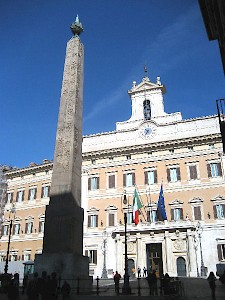
One of the most remarkable monuments in imperial Rome is the Horologium Augusti, a giant sundial, which had as its gnomon an obelisk that was originally made for a pharaoh named Psammetichus II (Neferibra Psamtik, 595-589). The monument was created for the emperor Augustus, who had in 30 BCE conquered Egypt and had seized the monolith in Heliopolis. The obelisk, 21.79 meter high, has been moved a bit and is now standing in front of the Italian parliament and is again used as a sundial (a line in the pavement indicates the date). The monument is described by Pliny the Elder:
Augustus used the obelisk in the Field of Mars in a remarkable way - namely to cast a shadow and thus mark the length of days and nights. A paved area was laid out commensurate with the height of the monolith in such a way that the shadow at noon on the shortest day might extend to the edge of the paving. As the shadow grew shorter and longer again, it was measured by bronze rods fixed in the paving. This device deserves study; it was the result of a brainwave of Facundus Novius.note
The laws of physics are always the same and because we know the place where the obelisk originally stood, it is a matter of mathematics to establish where the original pavement with the network of bronze rods must have been. In 1976, the German archaeologist Edmund Buchner predicted the exact location of the pavement. Three years later, he did indeed find what he had been looking for in the cellar of a cafeteria in the Via di Campo Marzio.
On the date of the emperor's birth, the shadow of the obelisk indicated the sanctuary. A line at right angle of this shadow would cross through the center of the Mausoleum of Augustus, the big round structure at the lower edge.
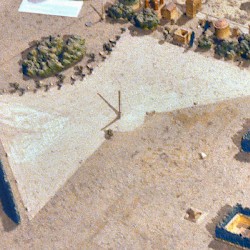 Rome, Horologium Augusti, model |
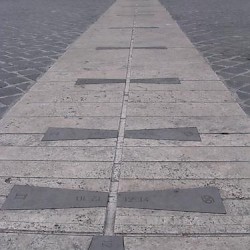 Rome, Horologium Augusti, modern pavement |
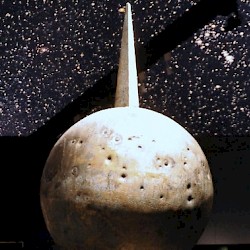 Rome, Horologium Augusti, Pinacle |
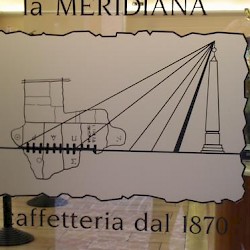 Rome, Horologium Augusti, modern reconstruction (on the door of a pub) |